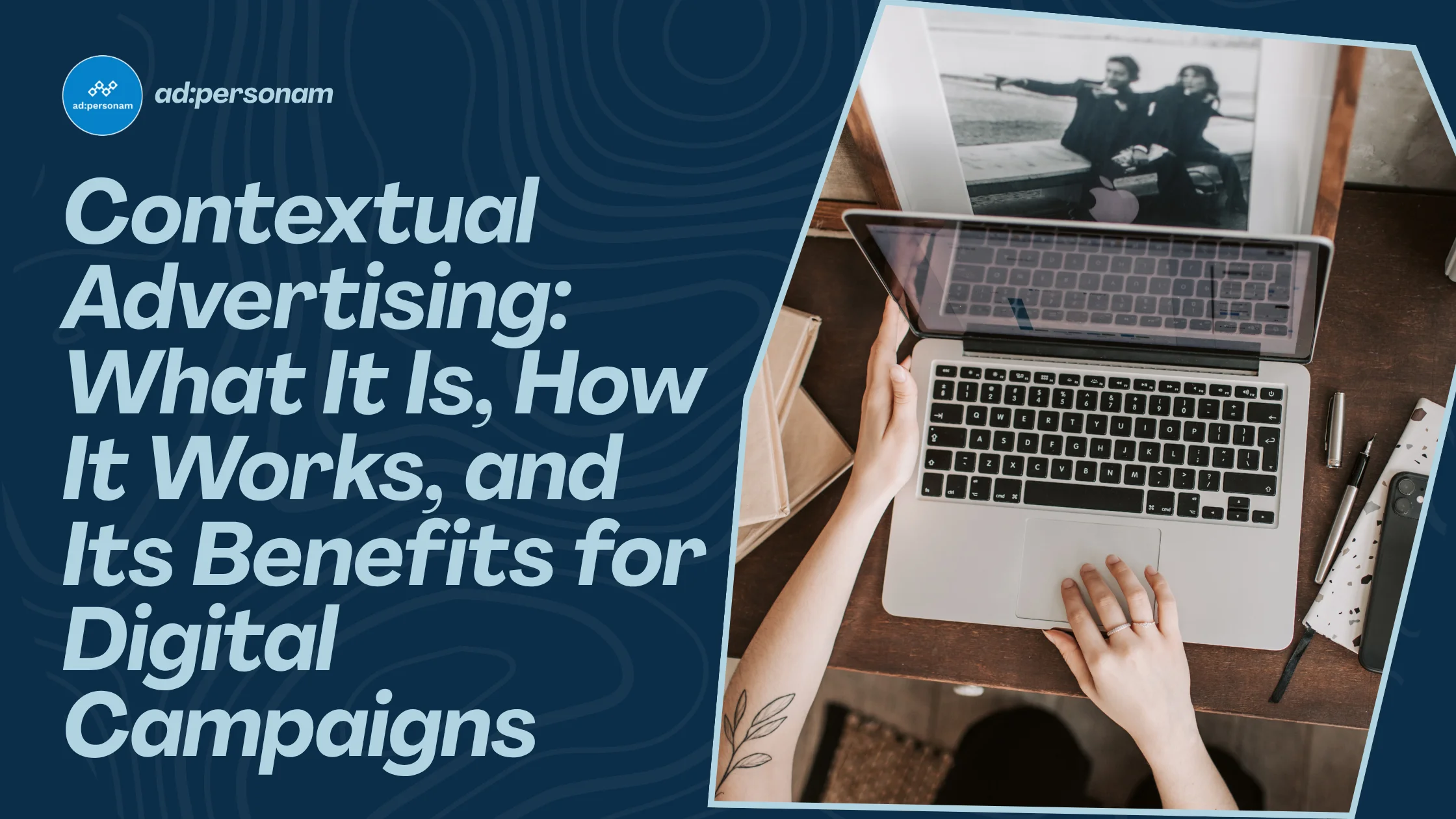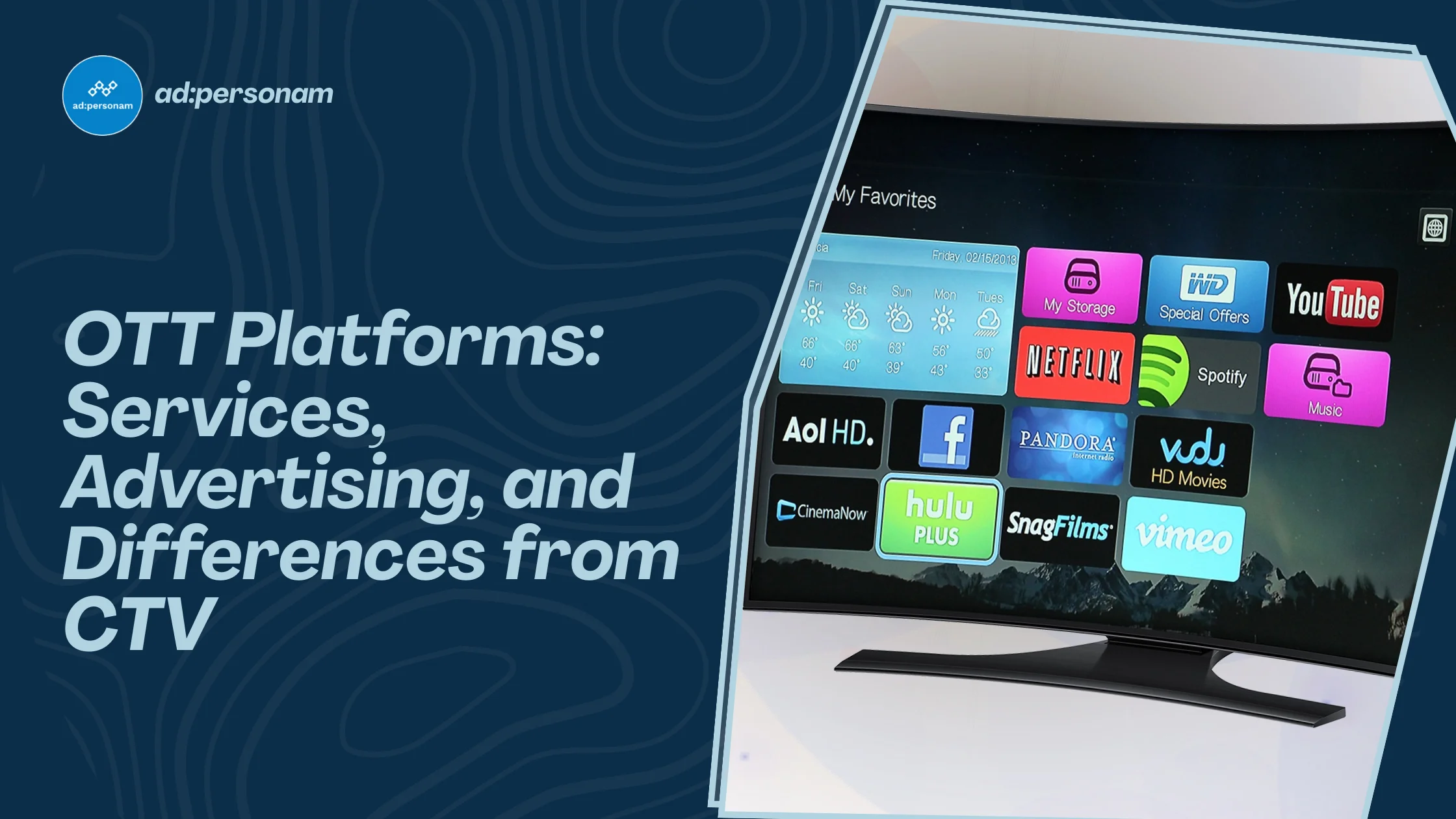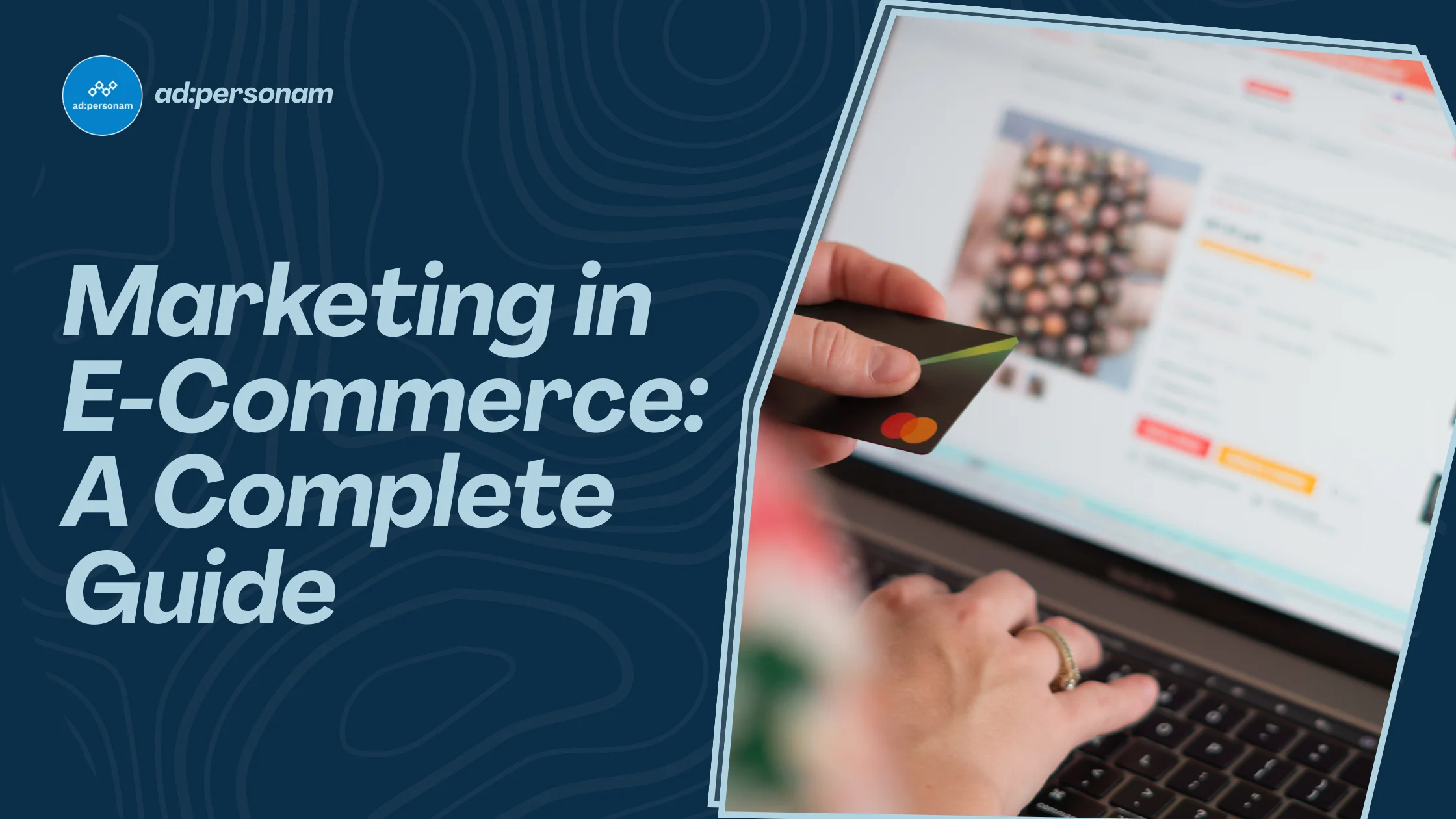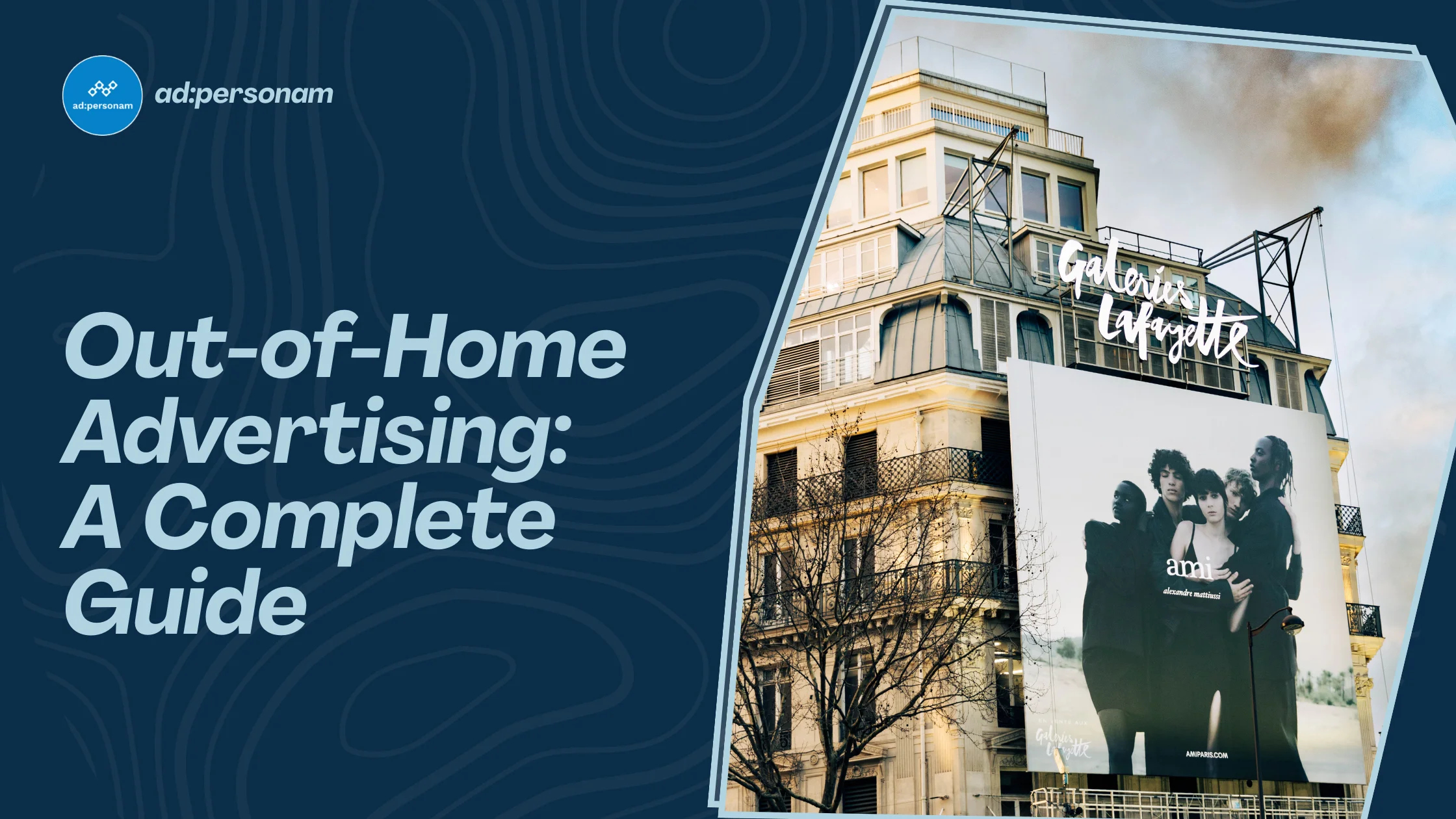Contextual Advertising: The Complete Guide to Privacy-First Targeting
Discover how contextual advertising delivers effective, privacy-compliant campaigns without cookies. AI-powered targeting for the cookieless era.
Contents
- What is Contextual Advertising
- How Contextual Advertising Works
- Benefits of Contextual Advertising
- Contextual Advertising Formats
- Contextual Advertising vs Other Strategies
- Contextual vs Programmatic Advertising
- New Opportunities in Contextual Advertising
- Case Studies and Practical Examples
- Frequently Asked Questions About Contextual Advertising (FAQ)

In a world where digital advertising is shifting toward more ethical and sustainable communication practices, contextual advertising emerges as a concrete answer to the cookieless era.
As we move through 2025, the advertising sector is experiencing a new phase of redefinition, driven by changing targeting models and increasing attention to privacy. While the global market grows by 7.4%, propelled by digital-first channels like Meta, Google, and Amazon, the advertising landscape is fundamentally transforming. Companies are embracing new approaches that deliver relevance without compromising user privacy.
In this article, we'll explore how contextual advertising fits into this evolving scenario, where artificial intelligence and semantic technologies enable more relevant and secure experiences, strengthening both trust and performance.
What is Contextual Advertising
Contextual advertising displays ads based on the content of the page where they appear, rather than on user behaviors or personal data. This strategy links the advertising message to the thematic context of the content: a banner for sports equipment on a fitness website, or a skincare video on a beauty guide.
Advanced technologies leverage semantic analysis and machine learning to understand not just keywords, but also tone, images, and videos, distinguishing, for example, between "Jaguar" the animal and "Jaguar" the automobile.
Contextual vs Native Advertising
While both share the goal of offering relevant advertising experiences, native advertising aesthetically integrates with page content, whereas contextual advertising shares the theme but can take various forms: banners, videos, or rich media.
The two strategies are often complementary: a native campaign can be based on contextual targeting to maximize relevance and engagement.
Practical Examples of Contextual Advertising
An ad for trekking equipment on a travel blog, or an audio ad for a music app during a mental wellness podcast, are effective examples of contextuality. On platforms like ad:personam, these associations happen in real-time thanks to AI models that analyze content and automatically select the most coherent ad for the context.
Set up your contextual advertising campaigns on our DSP platform!
How Contextual Advertising Works
The technical process begins with semantic analysis of page content, identifying keywords, concepts, and sentiment. Systems then classify pages into thematic categories and apply matching with corresponding ads. DSP platforms based on artificial intelligence, like Amazon DSP or Excelate, use predictive algorithms to improve relevance, analyzing text, images, and videos.
This evolution allows going beyond simple "if this word is present, show the ad" logic: today's AI can interpret complex relationships between themes, audiences, and purchase intentions, enhancing precision and ROI.
Benefits of Contextual Advertising
Contextual advertising offers numerous benefits for different industry players. As a specific action based on the context of engagement, it delivers advantages to both advertisers and publishers.
Benefits for Advertisers
Advertisers achieve more effective campaigns, with CTR and engagement increased up to 25% compared to behavioral targeting. The absence of third-party cookies reduces compliance costs and simplifies campaign management, while simultaneously improving transparency and brand reputation.
Benefits for Publishers
For publishers, contextual advertising offers sustainable and secure monetization, avoiding inappropriate content and enhancing user experience. "Contextual brand safety" technologies verify that ads appear only in suitable environments aligned with brand values.
Privacy Compliance and GDPR
This approach is privacy-first by nature: it doesn't require personal data collection or cross-site tracking. It's fully compliant with European regulations like GDPR, anticipating the cookieless future. Blockchain marketing solutions are also introducing greater transparency in ad traceability and impression verification.
Contextual Advertising Formats
Contextual advertising becomes even more effective when choosing the right formats for each channel and objective. The most widespread form is display and contextual banners. These can be static or dynamic banners appearing on thematically correlated pages. AI enables message adaptation based on content, improving coherence and conversion.
Native ads inserted in coherent editorial contexts significantly increase user trust, especially in mobile and app environments. The contextual approach allows positioning them during moments of greatest reader interest.
Video and interactive formats represent over 40% of digital advertising investments today. Integration with visual semantic techniques enables synchronization of ads with audiovisual content, while audio ads are rapidly emerging in podcast contexts and streaming platforms.
Contextual Advertising vs Other Strategies
Compared to traditional digital advertising strategies, contextual advertising stands out for its privacy-first approach, absence of individual tracking, and greater regulatory compliance.
Contextual targeting is based on page content analysis, while other strategies like behavioral targeting and retargeting primarily leverage behavioral data, often collected through cookies and digital identifiers. Following the implementation of increasingly stringent privacy and tracking regulations, companies are reevaluating their targeting models and rediscovering the effectiveness of contextual advertising for cookieless and transparent campaigns.
Contextual vs Behavioral Targeting
Behavioral targeting collects and analyzes data on browsing habits and online user interactions, showing personalized ads based on history, preferences, and interests. While this practice offers high personalization and often superior conversion rates, it involves significant privacy risks, compliance difficulties with regulations, and higher costs for data collection and management.
Contextual advertising, conversely, bases ad relevance exclusively on content present on the page visited by the user, improving privacy and simplifying consent management. In this model, personalization is less "individual" but more coherent with the moment, increasing engagement probability and reducing opt-out risk from users who tend to prefer non-invasive ads.
Contextual vs Retargeting
Retargeting identifies users who have already expressed interest in a product or service, showing targeted ads after the user has visited a specific site or performed online actions. This method is known for its effectiveness in driving conversions, but can easily lead to communication saturation, creating annoyance in users who feel "chased" by brands, especially in environments that don't allow direct privacy control.
Contextual advertising, instead, intercepts user needs in real-time without following their navigation, proposing ads only at the most relevant moment and on content they're actually viewing, with notable advantages in terms of acceptance and reputation.
Contextual vs Programmatic Advertising
Traditional programmatic advertising distributes ads at scale through DSP platforms, leveraging profiling data and third-party cookies.
The main difference from contextual programmatic concerns the data source used for matching: in classic programmatic, the aim is personalization through user profiling, while in contextual programmatic, relevance is optimized by leveraging page content and thematic signals, without violating privacy. Programmatic contextual therefore maintains automation and scalability, but with lower compliance costs and reduced advertising fraud risks.
In more evolved models, AI systems and blockchain marketing guarantee transparency and reliability in the process, with comparable or superior efficiencies.
New Opportunities in Contextual Advertising
Contextual market growth is estimated at a CAGR of 16.7% through 2034, signaling stable and increasing interest. This trend aligns with the expansion of cookieless campaigns and integration of AI-based predictive models.
AI and Contextual Optimization
New DSP platforms integrate machine learning, NLP, and computer vision for more precise and multidimensional content understanding. LLM algorithms analyze text, images, and videos, optimizing the connection between content and advertising message.
Future Strategies for Advertisers
Advertisers will need to learn to leverage synergy between automation, blockchain marketing, and audio ads to achieve holistic campaign optimization. Cookieless strategies will increasingly be tied to content quality and thematic coherence rather than tracking.
Case Studies and Practical Examples
Sectors like automotive, fashion, and fitness are already successfully experimenting with contextual targeting. Amazon Ads reports an average 25% increase in user engagement thanks to context and AI-based campaigns.
Display and contextual video campaigns have registered CTR 20% higher compared to those based on traditional targeting data, with cost per conversion 15% lower.
Consumer brands and digital startups are using contextual advertising to improve brand safety results and enhance content-ad association. Campaigns executed on ad:personam confirm how automatic context selection favors coherence and exposure quality.
Frequently Asked Questions About Contextual Advertising (FAQ)
What does contextual advertising mean?
Contextual advertising is a strategy where ads are shown based on the content of the visited page, rather than user data. On ad:personam, AI automatically optimizes matching between ads and contexts.
What is an example of contextual advertising?
A banner for sports equipment on a running shoe review or an audio ad from a music brand during a sports podcast are perfect examples of contextual advertising optimized in real-time with AI.
What are the different types of contextual advertising?
Display, video, native, and rich media represent the main formats. On ad:personam, they can be combined and optimized for performance and ROI thanks to the platform's intelligent algorithms.
Set up and define your contextual advertising campaigns on ad:personam's Self-Service DSP and improve your performance!
You might also like

OTT Platforms: Complete Guide to Advertising, CTV, and Streaming Services
Comprehensive guide to OTT platforms: how streaming services work, differences with CTV, and why they matter in programmatic advertising.

E-commerce Marketing: Complete Guide to Strategies, Tools, and Programmatic Campaigns
Discover how ecommerce marketing optimizes traffic, conversions, and sales through digital strategies and programmatic advertising.

Out of Home Advertising: Complete Guide to Programmatic OOH & DOOH
Learn how OOH and DOOH advertising work, key strategies for brand visibility, and how to run programmatic outdoor campaigns.